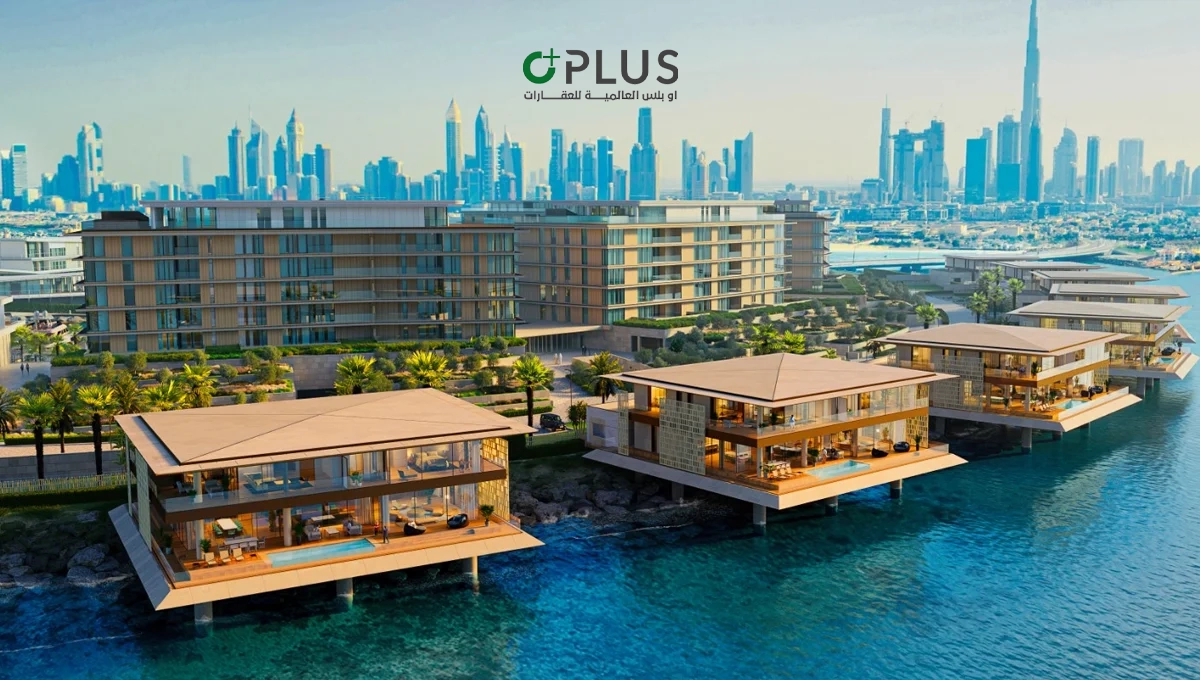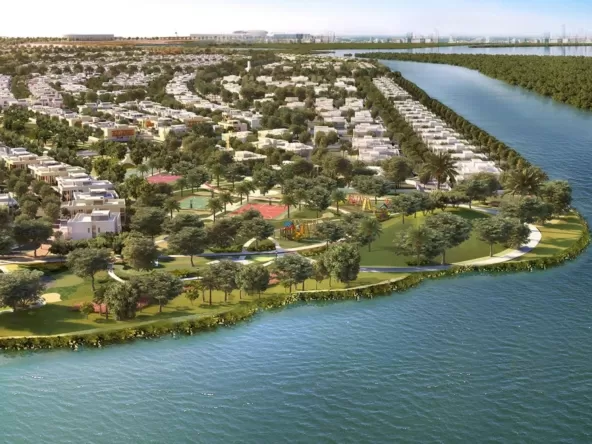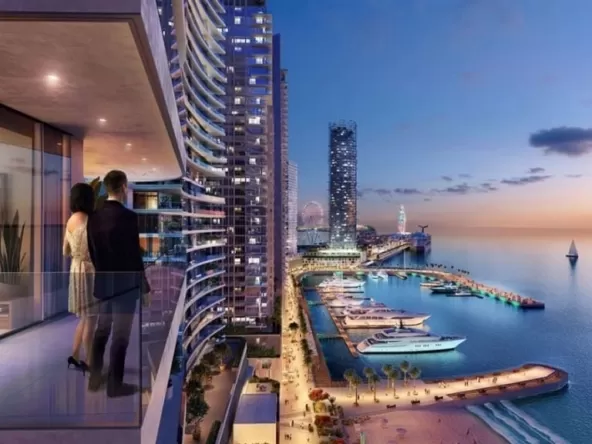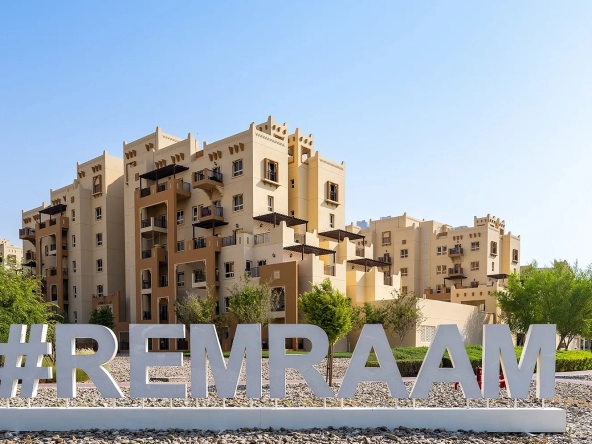
The Island That Redefined Luxury Living
Picture this: a crescent-shaped island floating just off the coast of Jumeirah, accessible only through a private bridge, where every villa enjoys a slice of pristine waterfront and the skyline of Downtown Dubai glitters in the distance. Welcome to Jumeirah Bay Island, now crowned the most expensive ultra-luxury neighborhood in Dubai.
With property prices soaring to an eye-watering AED 13,068 per square foot in 2025, Jumeirah Bay isn’t just a destination—it’s a statement. Buying here signals more than wealth; it reflects access to one of the rarest and most exclusive real estate assets in the Middle East.
But how did this once lesser-known island rise to outshine heavyweights like Palm Jumeirah, Emirates Hills, and Bluewaters Island? Let’s unpack the story.
Why Jumeirah Bay Tops Dubai’s Luxury Rankings
According to research from Driven Properties and Forbes, Jumeirah Bay’s surge is no accident. It’s a perfect cocktail of factors:
- Exclusivity and Limited Supply – With fewer than 130 plots released, availability is scarce. Owners rarely sell, which drives up prices when they do.
- Prime Waterfront Positioning – Villas and mansions come with panoramic views of the Arabian Gulf and Dubai’s skyline.
- Prestige Appeal – When fashion icon Bulgari chose the island for its first branded residences in Dubai, it cemented Jumeirah Bay’s status as the “Billionaires Island.”
For comparison, neighborhoods like Jumeirah Second and Umm Al Sheif follow at AED 7,500+ per square foot, underscoring how much Jumeirah Bay has pulled ahead. And while Palm Jumeirah and Emirates Hills remain household names in global luxury, Jumeirah Bay has quietly leapfrogged them with its blend of exclusivity and scarcity.
Dubai’s Luxury Real Estate Landscape in 2025
Dubai’s ultra-prime neighborhoods—Jumeirah Bay, La Mer, Bluewaters Island, Emirates Hills, and Palm Jumeirah—continue to attract ultra-high-net-worth individuals (UHNWIs) and global investors. But it’s not just about prestige. Buyers are motivated by two powerful drivers:
- Lifestyle Appeal – Think private beaches, yacht marinas, and branded residences designed by global icons.
- Capital Preservation – In an uncertain global economy, Dubai has emerged as a safe haven for wealth, offering strong appreciation and legal security for investors.
Meanwhile, more affordable and mid-market communities such as Jumeirah Village Circle (JVC) are thriving in terms of transaction volumes. This duality—where both luxury and affordable sectors grow side by side—reflects Dubai’s evolution into a mature, multi-layered property market.
Consistent Price Growth: Confidence Without Overheating
Let’s crunch some numbers. Between Q1 2021 and Q2 2025:
- The average price of ready residential properties jumped from AED 1,002 to AED 1,642 per square foot—a remarkable 64% increase.
- Apartment prices grew from AED 1,036 to AED 1,763 per square foot.
- Villa prices surged from AED 1,010 to AED 1,903 per square foot.
By Q2 2025, apartment and villa prices nearly converged, sitting around AED 1,903–1,904 per square foot. What does that tell us? Demand is broad-based, not limited to just one asset type. Both lifestyle seekers and investors are actively buying across categories.
And here’s the kicker: despite the sharp increases, analysts agree the market is not overheating. Gains are gradual, spread across both villas and apartments, signaling healthy, sustainable growth.
The Rise of Off-Plan Dominance
No conversation about Dubai real estate in 2025 is complete without addressing the off-plan boom.
- In Q1 2021, off-plan transactions sat at just over 4,200 deals.
- By Q2 2025, that number exploded to 36,184 transactions—an eightfold increase.
- Off-plan now accounts for 70% of all quarterly property sales.
Why the rush? Developers are launching aggressively, offering flexible payment plans, branded residences, and lifestyle-led communities that resonate with both local and international buyers.
Looking for the best real estate deals? We're here to help! Contact us to learn more.
Contact us via WhatsAppYet ready property sales remain strong at 15,170 transactions in Q2 2025. This tells us that while investors chase future gains through off-plan projects, end-users and rental investors still prize the certainty of ready-to-move-in homes.
Apartments Leading the Charge
The off-plan segment’s price growth has been driven primarily by apartments, which climbed from AED 1,354 per square foot in Q1 2021 to AED 2,288 in Q2 2025—a 68% increase.
Why apartments? They appeal to:
- Global investors seeking lower ticket sizes.
- Young professionals wanting branded, serviced residences.
- Yield-focused buyers, since apartments typically offer stronger rental returns than villas.
Meanwhile, off-plan villa prices more than doubled from AED 834 to AED 1,682 per square foot. The surge shows growing appetite for family-oriented, low-density communities, where space and privacy remain premium.
What This Means for Investors
If you’re an investor or homebuyer considering Dubai’s luxury market, the message is clear:
- Ultra-Luxury is Here to Stay – Jumeirah Bay has set a new global benchmark, but other districts like Palm Jumeirah and Emirates Hills remain strong contenders.
- Apartments Offer Liquidity – With off-plan apartments driving the market, they remain a flexible entry point for international buyers.
- Villas Are Family Gold – For those prioritizing lifestyle, villas in gated, low-density communities are an enduring investment.
- Balanced Growth Ahead – The slowdown in price acceleration since 2024 indicates a more sustainable, strategic market, driven by fundamentals rather than speculation.
Dubai’s Real Estate in Context: Why 2025 Is Different
Dubai’s market today is not the same as the speculative bubble of 2008. Several structural changes have made it more resilient:
- Population Growth – With residents surpassing 3.7 million and climbing, housing demand is structural, not speculative.
- Golden Visa & Investor-Friendly Policies – Long-term residency options make Dubai a global magnet for wealthy buyers.
- Diversified Economy – Beyond oil, Dubai’s strength in tourism, finance, and trade ensures stability.
- Developer Credibility – Tier-one developers now dominate launches, adding trust and reducing risk for buyers.
These fundamentals create a market where luxury thrives without destabilizing the rest of the housing ecosystem.
Looking Ahead: The Future of Ultra-Luxury in Dubai
Where does Dubai go from here? Analysts suggest the ultra-luxury segment will remain buoyant, but growth will be more selective. Buyers are no longer dazzled by flashy brochures alone—they demand quality, branded partnerships, and world-class amenities.
In short, location still matters, but quality is king. Expect branded residences like Bulgari, Armani, and Dorchester to lead the way, while integrated communities that offer wellness, privacy, and technology-driven living rise in popularity.
Final Thoughts: Why Jumeirah Bay Stands Apart
While Dubai has no shortage of glamorous addresses, Jumeirah Bay’s dominance is rooted in one simple truth: scarcity. With so few plots and such high demand, it is destined to remain one of the most exclusive neighborhoods in the Middle East—if not the world.
At OPlus Realty, we believe Dubai’s story is still being written. Whether you’re eyeing an opulent villa on Jumeirah Bay, a branded apartment in Downtown, or a family villa in a growing suburban hub, one thing is certain: Dubai’s real estate market in 2025 offers unmatched opportunities for both lifestyle and investment.



